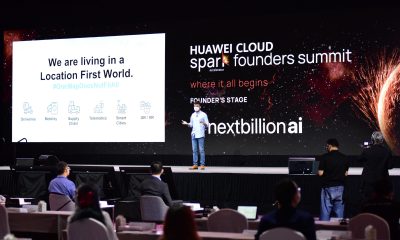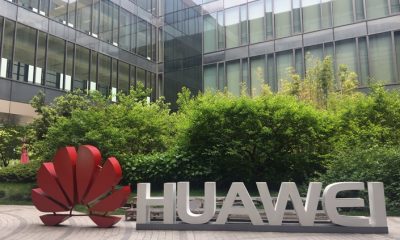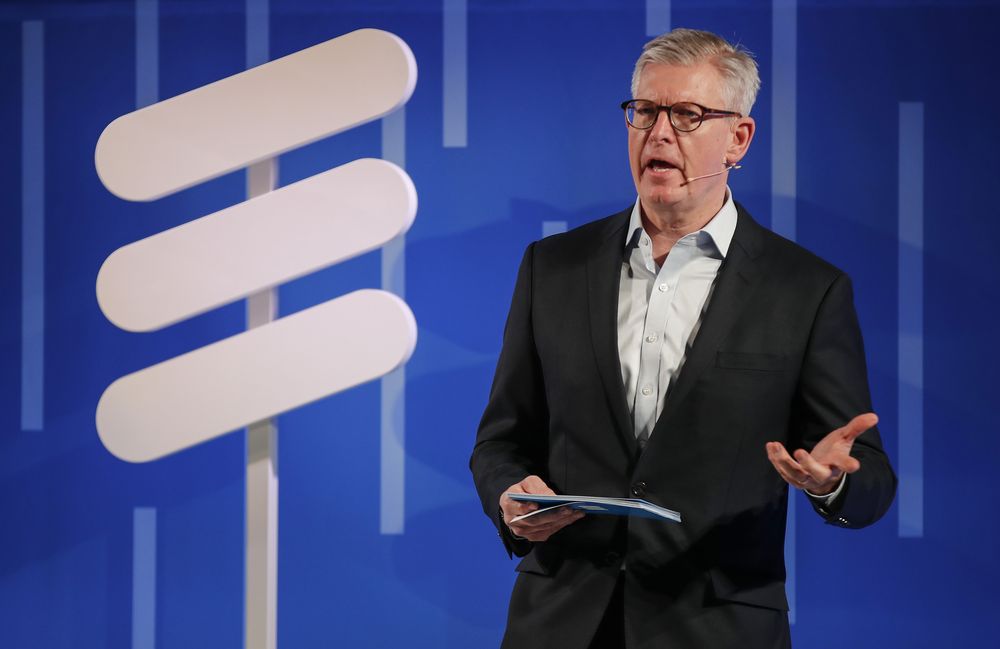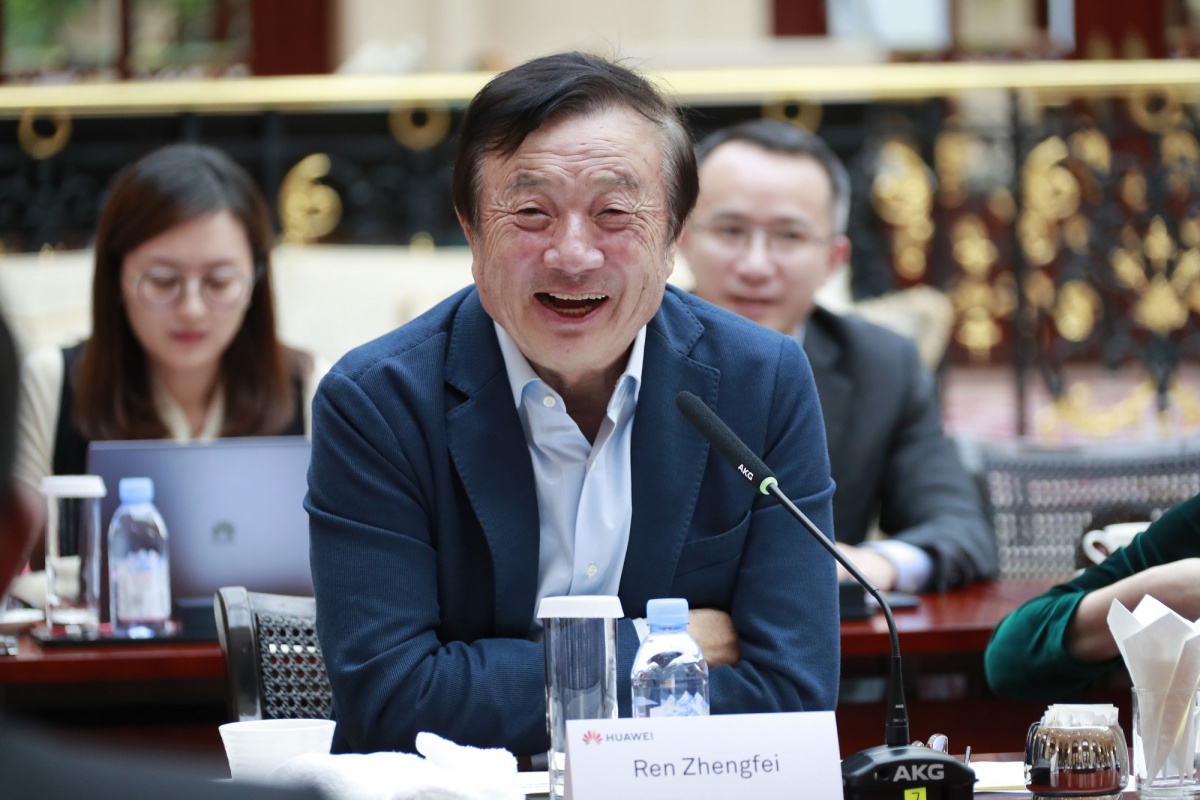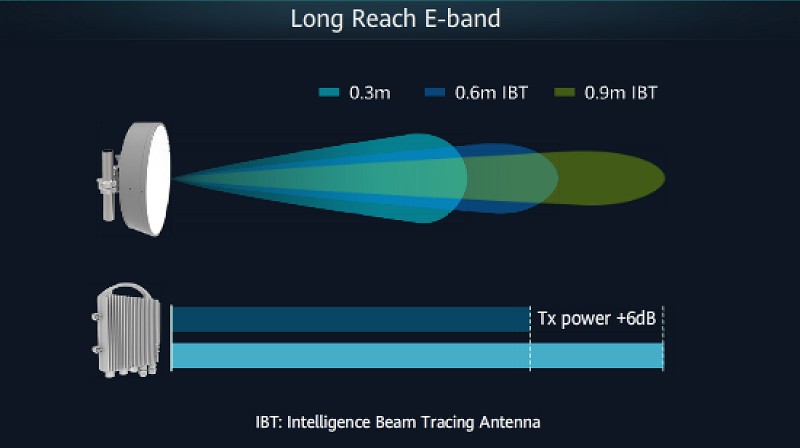News
Huawei strives to build industry intelligent twins with intelligent connectivity
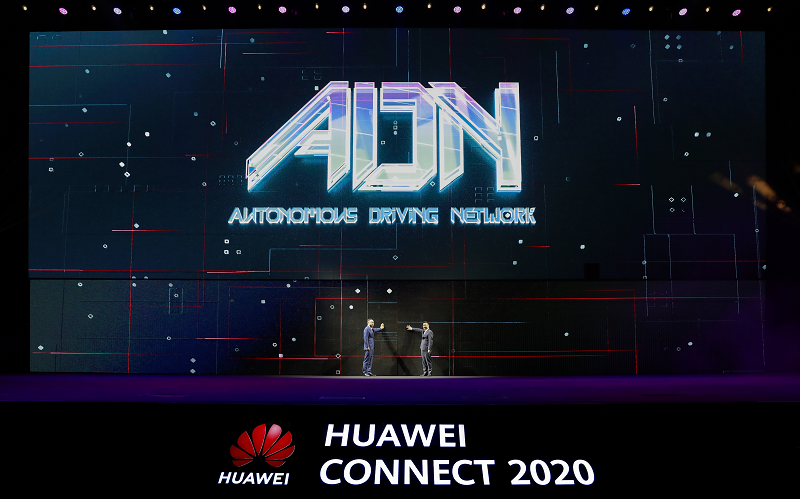
At HUAWEI CONNECT 2020, Huawei announced its all-scenario intelligent connectivity solutions for technology, network, and industry scenarios. These solutions will help Huawei deliver intelligent connectivity that is characterized by ubiquitous gigabit, deterministic experience, and hyper-automation in order to build industry Intelligent Twins. Huawei also launched autonomous driving network (ADN) solutions for enterprises, propelling enterprise networks into the ADN era and accelerating the intelligent upgrades of industries.
David Wang, Huawei Executive Director and Chairman of the Investment Review Board, delivered a keynote speech titled “Building industry Intelligent Twins with intelligent connectivity.”
According to Wang, connectivity is productivity. It is not mere computing power, but strong connectivity that makes Intelligent Twins smarter.
Huawei believes that ubiquitous gigabit, deterministic experience, and hyper-automation are the three major characteristics of intelligent connectivity.
Intelligent Twins raise five new requirements for connectivity
The four key components of Intelligent Twins are intelligent interactions, intelligent connectivity, intelligent applications, and the intelligent hub. Among these, intelligent connectivity is like the body of Intelligent Twins. What new requirements do Intelligent Twins place on intelligent connectivity?
There are three types of connectivity scenarios for Intelligent Twins. One is connectivity within the intelligent hub, such as the connection of AI cluster servers and cloud data centers. The second is connectivity between the intelligent hub and intelligent interaction devices; connecting the “brain” and the “limbs”, so to speak. The last type is connectivity between intelligent interaction devices, such as the connection of AI cameras, 4K drones, and robotic arms.
Overall, Intelligent Twins have five major requirements for connectivity: High reliability, zero packet loss, differentiated services, real-time high bandwidth, and smart O&M.
To meet the connectivity needs of Intelligent Twins, Huawei defined the three major characteristics of intelligent connectivity:
The first is ubiquitous gigabit. Bandwidth is the basis of connectivity. The wide application of AI cameras, drones, industrial cameras, and industrial VR/AR services has made ubiquitous gigabit connectivity essential.
The second is deterministic experience. Connectivity for Intelligent Twins mainly targets things and diverse production scenarios. For example, during peak times in 2019, there was one aircraft departing or arriving at Shenzhen Airport every less than one minute, making it essential to guarantee real-time networking. In another example, electric power companies must assure “six nines”, or even higher reliability, and less than two minutes of power outage per household per year. Therefore, deterministic connectivity is vital to the security and reliability of enterprise services.
The third is hyper-automation. As industries become intelligent, the service types as well as scale and complexity of networks will multiply, making network O&M more difficult. The application of big data and AI will transform traditional and semi-automated O&M into hyper-automated O&M, and leave all these complexities to be handled by digital intelligence.
Huawei’s all-scenario intelligent connectivity solutions
In terms of technology, Huawei’s all-scenario intelligent connectivity solutions will provide ubiquitous gigabit and low latency connectivity for intelligent interaction devices, and apply AI to achieve deterministic network experience and hyper-automated O&M. In terms of networks, these solutions will provide Intelligent Twins with campus, data center, WAN, and security networks. As for industries, intelligent connectivity will be combined with intelligent interactions, the intelligent hub, and industry know-how to build scenario-specific, intelligent solutions for industries.
5G intelligent connectivity: Gigabit uplink speed, 20ms latency, and submeter-level location
To support the intelligent upgrade of industries, Huawei will continue enhancing its 5G intelligent connectivity capabilities in terms of uplink bandwidth, latency, and location accuracy. For example, in the smart manufacturing domain, Huawei used its Super Uplink technology to provide gigabit uplink speeds for HD video uploads. For scenarios that require remote operation and control, such as ports, Huawei’s 5G intelligent connectivity technology has introduced features such as pre-scheduling and mini-slot to reduce latency to 20ms and replace 90% of manual labor with automated operations. Thanks to UTDOA and higher bandwidth, Huawei’s 5G intelligent connectivity can support submeter-level location accuracy for smart manufacturing, enhancing the efficiency of production and management at industrial parks.
Intelligent IP networks: High bandwidth and lossless for all services
Based on a three-layer AI architecture comprised of network elements, networks, and clouds, Huawei’s intelligent IP networks facilitate the upgrade of campus, WAN, and data center networks to Version 2.0.
Huawei’s CloudCampus 2.0 solution takes campus networks into the gigabit era, providing any application with gigabit connectivity via any device and allowing the intelligent scheduling of network resources. The CloudWAN 2.0 solution brings intelligence to WAN networks. With CloudWAN 2.0, synergy can be achieved between clouds and networks, meeting the needs for differentiated services. CloudFabric 2.0 enables zero packet loss in data center networks and increases both AI compute and storage efficiency by over 30%, helping data center networks become intelligent.
F5G intelligent all-optical networks: High bandwidth interconnection and flexible pipes
Huawei has proposed the all-optical network strategy for the F5G era, and launched three intelligent all-optical network solutions.
The first is the Campus OptiX solution. Campus OptiX offers high bandwidth access to meet campus needs for new services such as 4K cameras and VR/AR.
The second is Single OptiX. This solution can meet transmission needs at different rates while greatly increasing efficiency.
The third is DC OptiX. IT staff can deploy DC OptiX with just one click, making it a plug-and-play solution for enterprise scenarios.
Through this strategy, Huawei is committed to extending optical connectivity to the network edge, and bringing the ultimate service experience to every person, home and organization.
Huawei’s ADN solutions target enterprises
Huawei’s ADN solutions bring intelligence to networks. By integrating AI into network elements, networks, and clouds, Huawei’s ADN networks are self-organizing, self-healing, and self-optimizing. These solutions will make digital industry services and hyper-automated operations a reality.
Network elements + AI: AI is applied to upgrade traditional network elements into digital, intelligent network elements, allowing for more agile data sensing and processing of every network element.
Network + AI: Huawei uses AI to redefine network management. The intelligent management and control system helps build network digital twins, and enables the dynamic control and closed-loop management of networks, such as automatic deployment, pre-event simulation, post-event verification, prediction and prevention, and proactive optimization.
Cloud + AI: Huawei provides cloud-based AI training and model services for networks, and continues upgrading the software systems and AI models that are already embedded into its equipment and networks. This constantly improves autonomous driving networks and makes networks smarter.
Huawei’s customers from Shenzhen Airport, China Southern Power Grid, and SPD Bank shared the application of Huawei intelligent connectivity across the transportation, electricity, and finance sectors.
Wang concluded his speech by saying: “Over the past 40 years, Huawei has worked with all stakeholders to connect the unconnected and build a fully connected world. Over the next 40 years, we are committed to building industry Intelligent Twins with intelligent connectivity.”
News
Yotta’s Cloud Data Center in GIFT City, Gujarat goes live
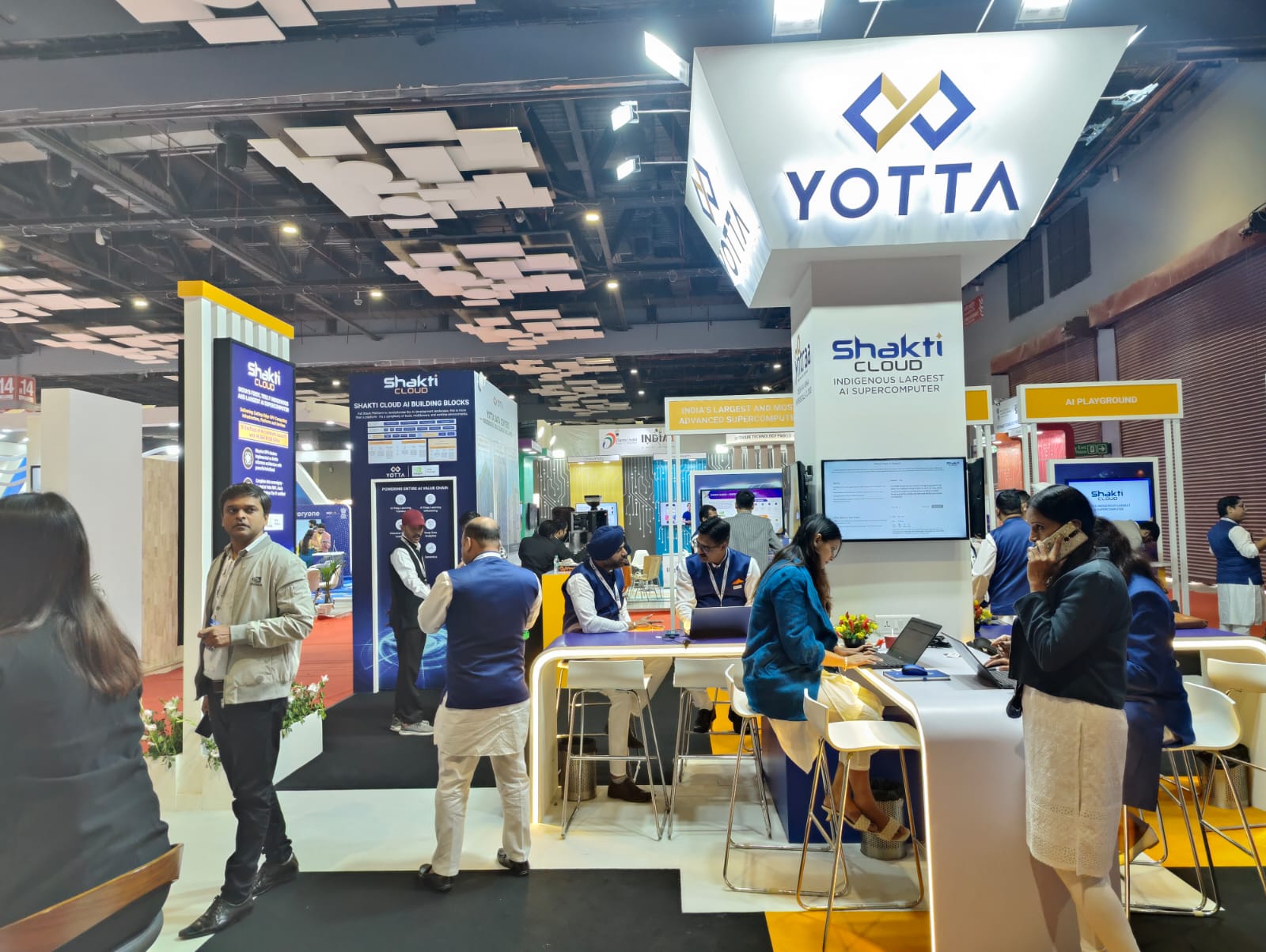
NEW DELHI: Yotta Data Services, an end-to-end Digital Transformation service provider, has announced that its state-of-the-art data centre facility, “Yotta G1”, located in GIFT city, Gandhinagar is ready for service (RFS).
The opening of this data center marks the debut of Yotta in Gujarat and progresses the company’s mission to provide digital services in India’s high-growth markets.
G1 is Yotta’s fifth data center facility in the country. It joins four large operational data centers, two of which, at Navi Mumbai and Greater Noida are part of hyperscale campuses. Yotta G1 is uniquely located inside the International Financial Services Center (IFSC) zone of Gandhinagar’s Gujarat International Finance Tec-City (GIFT city).
G1 represents an investment of more than INR 500 cr. over five years across critical non-IT and IT / Cloud / AI compute infrastructure. The data center has a capacity of over 350 high-density racks and 2 MW power (which can be scaled further as per demand). The facility is designed to meet the most demanding digital needs of its customers, who may be located within GIFT City or anywhere in the world, by seamlessly delivering fault-tolerant facility infrastructure, high-performance Cloud compute and storage infrastructure, advanced physical and cyber security, unmatched connectivity, and steadfast sustainability.
For large global enterprises operating in the GIFT City IFSC zone, the G1 data center functions as a potential data embassy, whereby their data stored is subject to the laws and regulations of their home country, thus allowing them to maintain sovereignty over their data, even when stored in India. By storing data in a physically different location, global enterprises can ensure continuity of operations in case of major disruptions within their borders. The data center’s location also ensures compliance with the IFSC regulations, providing businesses in the zone with distinct advantages like free foreign exchange convertibility, a liberalised regulatory environment, and business-friendly policies. It also helps enterprises adhere to IFSC’s compliance requirements, including being mandated to host their data within the IFSC zone.
Commenting on the announcement, Darshan Hiranandani, Co-founder and Chairman, Yotta Data Services, said, “The state of Gujarat, with GIFT City, has been at the forefront of providing a viable and sustainable platform for global businesses to set up base in India. The setting up of the IFSC zone is a further testament to their vision for financial services companies. We are proud to support this vision of the Gujarat government with a state-of-the-art data center within the IFSC zone, providing the latest and best in cutting-edge technologies to help businesses set up and scale their businesses while also adhering to all regulatory requirements.”
Adding to this, Sunil Gupta, Co-Founder, MD & CEO, Yotta Data Services, said, “Yotta’s G1 marks a pivotal milestone in delivering high-end data center, Cloud, AI compute, storage, connectivity and cybersecurity services to enterprises both on a global and local scale in the Gujarat region. Besides serving the domestic enterprises within and outside GIFT City, our data center shall serve as a potential data embassy for global enterprises, enabling them to adhere to their respective country’s laws while offering a dependable and secure locale for offshore data storage.”
G1 data centre stands distinct in GIFT city for being a data center offering more than just colocation services. True to Yotta’s stature as the end-to-end digital transformation partner of choice for enterprises, G1 brings forth a suite of key features, ranging from advanced data security and customised business solutions to an indigenous hyperscale cloud offering, AI-GPU compute offering, state-of-the-art infrastructure, cybersecurity expertise, seamless integration with managed IT services, 24/7 customer support, cost optimisation, and an overall competitive edge.
This announcement follows on the heels of Yotta’s recent launch of its cloud services – Shakti Cloud and Yntraa Cloud. Powered by NVIDIA’s top-of-the-line GPUs, Shakti Cloud is India’s largest & fastest AI-HPC supercomputer, delivering cutting-edge GPU computing infrastructure, platforms, and services, including Infrastructure as a Service, Platform as a Service, and Software as a Service. Yntraa Cloud, on the other hand, is a truly indigenous hyperscale cloud platform at par with global cloud platforms, offering an exhaustive range of cloud products and services.
News
Optiemus Infracom joins hands with Corning International

NEW DELHI: Domestic contract manufacturer Optiemus Infracom has entered into a joint venture with US-based speciality glassmaker Corning International to set up India’s first manufacturing facility for producing high-quality finished cover glass parts for the mobile consumer electronics industry.
The collaboration between both the companies will help expand India’s electronics manufacturing ecosystem, as the Indian government strengthens its Make in India initiative. As a part of the joint venture, the companies strategically aim to set up a world-class manufacturing facility in India, powered by cutting-edge technologies and processes.
Driven by a shared commitment to innovation and technological excellence, this collaboration will pave the way for the manufacturing of “Made in India” finished cover glass parts for use in mobile consumer electronic devices, and other cover glass applications, to meet the needs of next-generation mobile consumer electronic devices.
The joint venture signifies a powerful synergy between Optiemus’s deep domestic industry and manufacturing knowledge of electronics and telecom market and Corning’s globally-acclaimed expertise in advanced glass technology. By combining these strengths, the joint venture aspires to not only establish cover glass manufacturing capabilities and capacity in India, but also to contribute significantly to the creation of jobs and skill development within India’s thriving technology sector, the companies said in a statement.
Ashok Kumar Gupta, Chairman, Optiemus Infracom, said, “It is a matter of great pride for us to actively contribute to the growing manufacturing ecosystem in the country. With this joint venture, initiated in line with the vision of Hon’ble Prime Minister of India of ‘Make in India’ programme and the “Atmanirbhar Bharat” initiative, we are committed to make available world-class high-quality products for global and local brands.”
“Embarking on this new journey, we intend to emerge as one of the top manufacturers of finished cover glass parts for use in mobile consumer electronic devices in the next five years. Our collective expertise in innovation, design, and manufacturing, will provide holistic solutions for the brands,” Gupta added.
5g
MediaTek Catch-up with Tech: Infinix Zero 30 5G with Dimensity 8020 launched

NEW DELHI: Chipset maker MediaTek, which claims to power more than two billion connected devices every year, hosted ‘Catch-up with Tech’ in collaboration with handset brand Infinix on August 28 to share insightful and engaging conversations about the new-age smartphones and innovative technologies powering everyday lives.
The meet-up threw the spotlight on the MediaTek Dimensity Auto, Satellite solutions and Generative AI along with an extensive showcase of newly-launched Infinix Zero 30 5G powered by MediaTek Dimensity 8020, Infinix GT 10 Pro powered by MediaTek Dimensity 8050, and Infinix QLED TV powered by MediaTek.
In terms of specs, the Infinix Zero 30 5G is tailored for young storytellers and creators, featuring the first-ever smartphone to deliver 4K 60fps video recording from its 108 MP OIS rear camera and ultra-high resolution 50MP front camera. The Zero 30 series powered by MediaTek Dimensity 8020 is said to be a game changer for the front camera vlogging experience along with being the slimmest curved AMOLED smartphone in the segment with glass and a vegan leather back panel. It also claims to be one of the most premium-looking devices in the segment.
The event witnessed a panel discussion moderated by Anuj Sidharth, Deputy Director Marketing & Corporate Communications, MediaTek and included expert panelists from Infinix, MediaTek and two renowned professional photographers.
“With the fifth edition of Catch-up with Tech, we aim to bring consumers closer to the technology and enable them to make informed buying decisions based on their diverse needs. In collaboration with Infinix, this meet-up is in-line with MediaTek’s vision of technology democratization and making innovative technology accessible to everyone,” said Anku Jain, Managing Director, MediaTek India. “The MediaTek Dimensity 8020 in Infinix Zero 30 5G brings faster displays, brilliant cameras and ultra-fast performance. Further, MediaTek Imagiq technologies enrich the capture experience by combining dedicated AI, imaging processors and accelerators to provide incredible results,” he added.
Anish Kapoor, CEO, Infinix Mobile India, said, “Featuring India’s first 50MP 4K 60 fps video recording, Infinix Zero 30 5G is primed to redefine smartphone imaging capabilities, setting a new standard for the creators and vlogging enthusiasts. Our collaboration with MediaTek has played a pivotal role in shaping our exceptional smartphone portfolio, and the Zero 30 5G stands as evidence of our unwavering commitment to innovation and delivering unmatched experiences to our users. The display and design of the device represent a leap forward in smartphone technology. As Infinix Zero 30 5G hits the shelves, we are positive that our customers will find this new offering as exhilarating as we do, further empowering creators to capture their story like never before.”
Radhakrishnan Chakyat, a photography evangelist, founder and host of Pixel Viilage, said, “Infinix Zero 30 5G smartphone powered by MediaTek Dimensity 8020 chipset has amazing hardware features, an excellent camera, dual-view video mode and is primed for optimal content creation and saves a tremendous amount of editing time.”
Aarzoo Khurana, a wildlife photographer, said, “Over the last few days, I clicked various pictures and recorded a few videos with the newly-launched Infinix Zero 30 5G powered by MediaTek Dimensity 8020, and the experience has been truly inspiring. Infinix’s smartphone’s OIS feature helps content creators click shake-free pictures and the front camera, which is extremely sharp and detailed, enables content creators to click countless selfies.”

